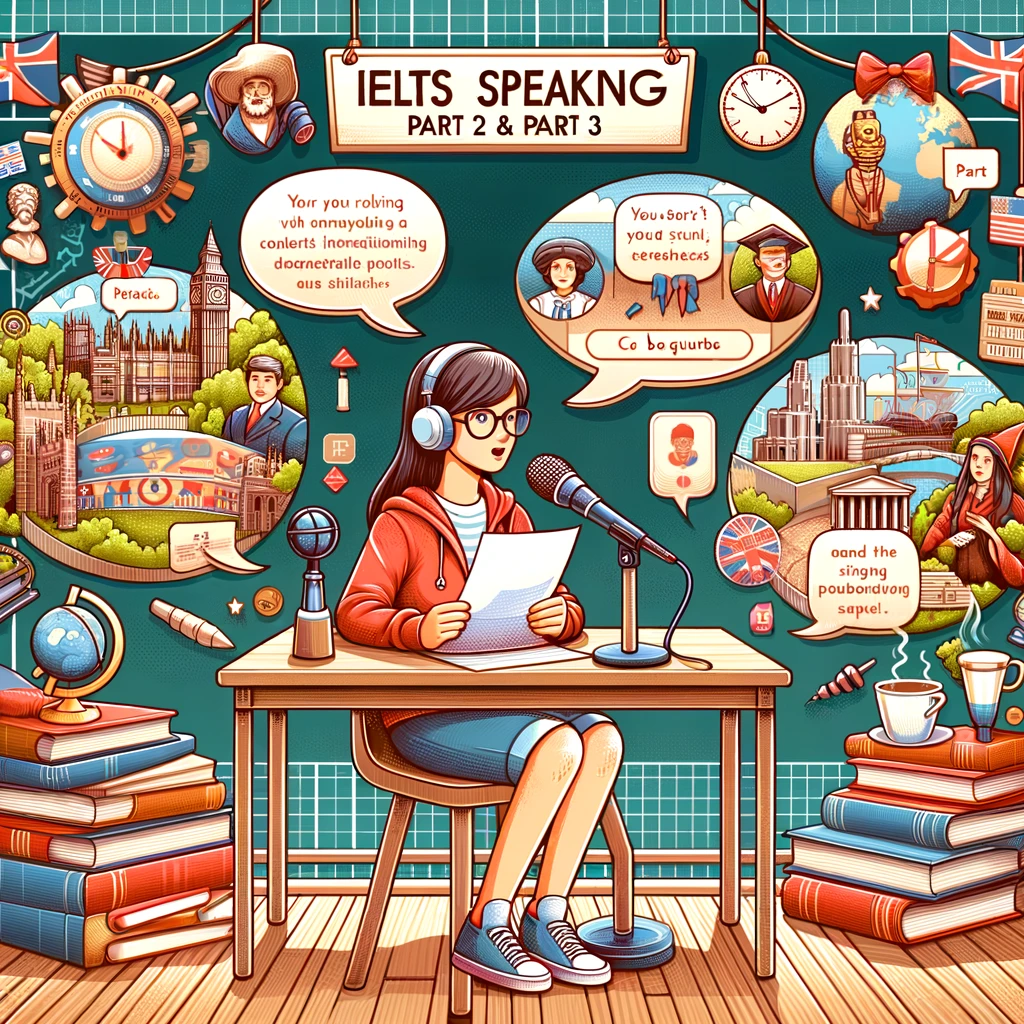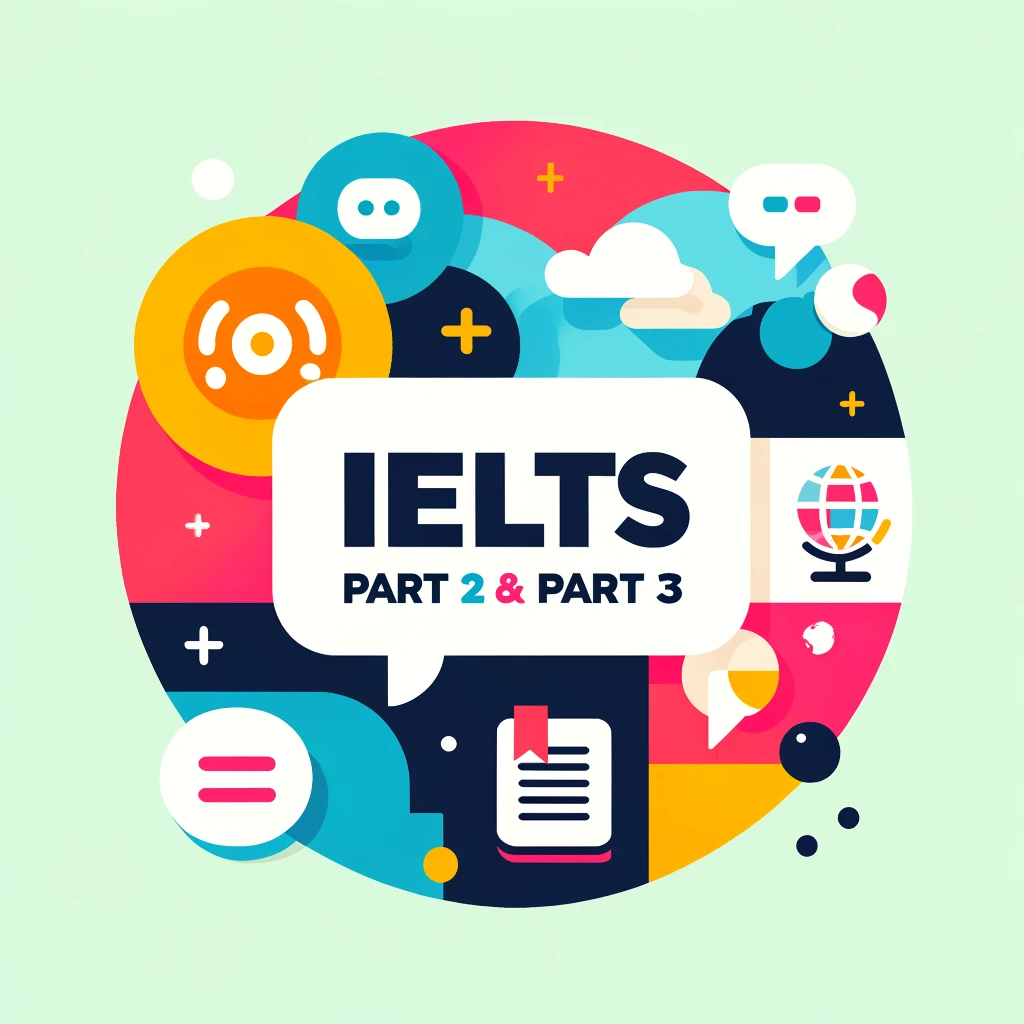IELTS Speaking Part 2 Cue Card
Describe a piece of art (modern or traditional) that you like.
You should say:
- What the piece of art is
- When and where you first saw it
- What it looks like
- And explain why you like it
Follow-up Questions
- What forms of traditional art are popular in your country?
- How does modern art differ from traditional art in your view?
- Do you think art galleries and museums should focus more on traditional art or modern art? Why?
- In your opinion, how important is it to preserve traditional art forms?
- Do you believe that modern art is more appreciated by younger generations? Why or why not?
- How can traditional art be made more appealing to contemporary audiences?
- What role do you think technology plays in the creation and appreciation of modern art?
- Can you think of any traditional art forms that have influenced modern art?
- Do you think governments should support the arts more? If so, how?
- How do you think art influences cultural identity and heritage?
IELTS Speaking Part 2 Cue Card Answer
Describe a piece of art (modern or traditional) that you like.
One piece of art that I greatly admire is the “Mona Lisa” by Leonardo da Vinci. This iconic painting, which dates back to the early 16th century, is housed in the Louvre Museum in Paris. I had the opportunity to see it in person during a visit to the Louvre a few years ago, and the experience was unforgettable.
The “Mona Lisa” depicts a woman with an enigmatic expression, which has intrigued and captivated viewers for centuries. Her mysterious smile and the subtle interplay of light and shadow, known as sfumato, demonstrate Leonardo da Vinci’s mastery of the art of painting. The background of the painting features a distant landscape with winding paths and a bridge, adding depth and a sense of tranquility to the composition.
What I find particularly fascinating about the “Mona Lisa” is not just its artistic brilliance but also its historical and cultural significance. It has become a symbol of Renaissance art and has influenced countless artists and art movements. The painting’s fame is partly due to its history, including its theft in 1911 and the various theories about the identity of the sitter.
I appreciate the “Mona Lisa” for its timeless beauty and the skill with which it was created. The painting’s ability to evoke curiosity and admiration across generations makes it a truly remarkable piece of art.
Follow-up Questions and Answers
- What forms of traditional art are popular in your country?
In my country, traditional art forms such as carpet weaving, miniature painting, and pottery are quite popular. These art forms have been passed down through generations and are deeply embedded in our cultural heritage. Each piece is meticulously crafted, often featuring intricate patterns and designs that reflect our history and traditions. - How does modern art differ from traditional art in your view?
Modern art often emphasizes innovation and experimentation, breaking away from traditional techniques and subjects. It tends to focus more on abstract concepts and emotions, using a variety of mediums and styles. In contrast, traditional art typically adheres to established conventions and often depicts realistic scenes or historical events. Both forms have their own unique appeal and value. - Do you think art galleries and museums should focus more on traditional art or modern art? Why?
I believe art galleries and museums should strive for a balance between traditional and modern art. Showcasing both allows visitors to appreciate the evolution of artistic expression over time. Traditional art provides a connection to our past and cultural roots, while modern art offers fresh perspectives and challenges our perceptions. This balance can enrich our understanding and appreciation of the art world. - In your opinion, how important is it to preserve traditional art forms?
Preserving traditional art forms is crucial as they are an integral part of our cultural identity and heritage. They offer insights into the values, beliefs, and practices of our ancestors. Moreover, traditional art forms can inspire contemporary artists and contribute to the diversity and richness of the global artistic landscape. Without preservation efforts, we risk losing these valuable cultural expressions. - Do you believe that modern art is more appreciated by younger generations? Why or why not?
Yes, I do believe that modern art is more appreciated by younger generations. This is likely because modern art often addresses contemporary issues and utilizes innovative techniques and materials that resonate with younger audiences. Additionally, the abstract and interpretive nature of modern art can be more engaging for those who are accustomed to a fast-paced, visually-driven world. - How can traditional art be made more appealing to contemporary audiences?
Traditional art can be made more appealing to contemporary audiences by integrating it with modern elements. For instance, digital exhibitions and interactive displays can provide a more engaging experience. Collaborations between traditional and modern artists can also create unique works that highlight the relevance of traditional techniques and motifs in today’s world. - What role do you think technology plays in the creation and appreciation of modern art?
Technology plays a significant role in both the creation and appreciation of modern art. Digital tools and software allow artists to explore new creative possibilities and produce art in innovative ways. Additionally, technology has made art more accessible through online galleries, virtual reality exhibitions, and social media platforms, enabling a wider audience to experience and appreciate modern art. - Can you think of any traditional art forms that have influenced modern art?
Yes, many traditional art forms have influenced modern art. For example, Japanese ukiyo-e woodblock prints had a profound impact on Impressionist and Post-Impressionist artists such as Vincent van Gogh and Claude Monet. The simplicity, bold lines, and use of color in these prints inspired modern artists to experiment with similar techniques and aesthetics in their own works. - Do you think governments should support the arts more? If so, how?
Yes, I believe governments should support the arts more. They can do this by providing funding for art programs in schools, offering grants and subsidies for artists and cultural institutions, and promoting public art projects. Such support can help nurture creative talent, preserve cultural heritage, and make the arts more accessible to the public. - How do you think art influences cultural identity and heritage?
Art plays a vital role in shaping and expressing cultural identity and heritage. It reflects the values, beliefs, and experiences of a community, serving as a visual record of its history. Through art, people can connect with their cultural roots, share their stories, and foster a sense of pride and belonging. Art also facilitates cross-cultural understanding and appreciation, enriching the global cultural landscape.
Band 9 Vocabulary
- Mesmerizing
- Intricate
- Profound impact
- Innovative techniques
- Cultural heritage
- Abstract concepts
- Interpretive nature
- Preservation efforts
- Contemporary issues
- Cross-cultural understanding

